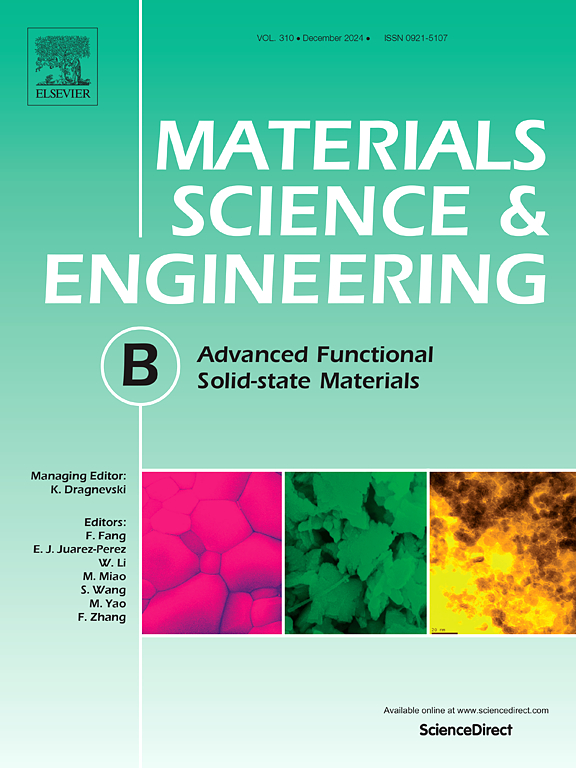Removal of heavy metals from contaminated water using Metal-Organic Frameworks (MOFs): A review on techniques and applications
IF 4.6
3区 材料科学
Q2 MATERIALS SCIENCE, MULTIDISCIPLINARY
引用次数: 0
Abstract
One of the major environmental issues is the discharge of wastewater containing high concentrations of heavy metals (HMs), which harm humans and ecosystems. There are various methods for treating such wastes, among which adsorption has proven to be the most successful and economical approach. However, selecting an appropriate adsorbent depends on its chemical functionality, high surface area, porosity, and ability to target the pollutants (in our case, HMs). This study investigates the synthesis process and adsorption mechanism of metal–organic frameworks (MOFs) compounds. It also evaluates their effectiveness in removing common heavy metals, including lead (Pb), cadmium (Cd), arsenic (As), and chromium (Cr) from aqueous solutions. Furthermore, we analyze the comparable adsorption capacity of different MOFs for heavy metals and correlate it with the structural advantages that enable this capacity. Among MOFs, the zirconium-based ones have received special attention due to their excellent stability and adsorption efficiency, making them ideal for various water treatment processes. This report explored the future possibilities of MOF materials for environmental remediation. Findings showed that MOFs, particularly those based on zirconium, outperform standard adsorbents in terms of HMs removal from water due to their adjustable structure and high adsorption efficiency. It also provides a comparative examination of many MOFs and proposes numerous essential adsorption mechanisms that can be extremely useful in the future development of water treatment technologies.

金属有机骨架(mof)去除水中重金属的技术及应用综述
其中一个主要的环境问题是排放的废水中含有高浓度的重金属,危害人类和生态系统。处理这类废物的方法有很多种,其中吸附法已被证明是最成功和最经济的方法。然而,选择合适的吸附剂取决于它的化学功能、高表面积、孔隙度和靶向污染物的能力(在我们的例子中是HMs)。研究了金属有机骨架(MOFs)化合物的合成工艺及其吸附机理。它还评估了它们从水溶液中去除常见重金属的有效性,包括铅(Pb)、镉(Cd)、砷(As)和铬(Cr)。此外,我们分析了不同mof对重金属的比较吸附能力,并将其与实现这种能力的结构优势联系起来。在mof中,锆基mof由于其优异的稳定性和吸附效率而受到人们的特别关注,使其成为各种水处理工艺的理想选择。本报告探讨了MOF材料用于环境修复的未来可能性。结果表明,mof,特别是基于锆的mof,由于其结构可调节和吸附效率高,在去除水中HMs方面优于标准吸附剂。它还提供了许多mof的比较研究,并提出了许多基本的吸附机制,这些机制在未来水处理技术的发展中非常有用。
本文章由计算机程序翻译,如有差异,请以英文原文为准。
求助全文
约1分钟内获得全文
求助全文
来源期刊

Materials Science and Engineering: B
工程技术-材料科学:综合
CiteScore
5.60
自引率
2.80%
发文量
481
审稿时长
3.5 months
期刊介绍:
The journal provides an international medium for the publication of theoretical and experimental studies and reviews related to the electronic, electrochemical, ionic, magnetic, optical, and biosensing properties of solid state materials in bulk, thin film and particulate forms. Papers dealing with synthesis, processing, characterization, structure, physical properties and computational aspects of nano-crystalline, crystalline, amorphous and glassy forms of ceramics, semiconductors, layered insertion compounds, low-dimensional compounds and systems, fast-ion conductors, polymers and dielectrics are viewed as suitable for publication. Articles focused on nano-structured aspects of these advanced solid-state materials will also be considered suitable.
 求助内容:
求助内容: 应助结果提醒方式:
应助结果提醒方式:


